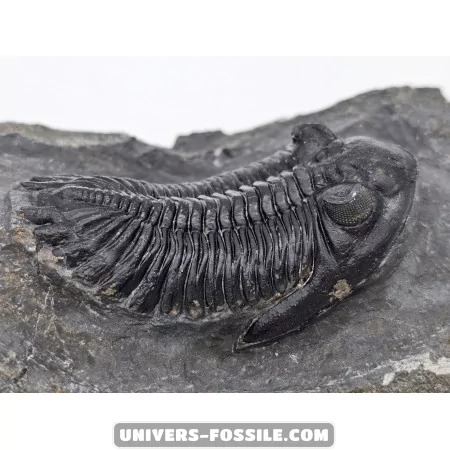Hollardops Trilobites - Explore the Fascinating World of Ancient Marine Life

Hollardops Trilobites
Hollardops trilobites are an extinct species of trilobites, a group of marine arthropods that thrived millions of years ago. These fascinating creatures were among the prominent inhabitants of the Paleozoic oceans, offering paleontologists valuable insights into ancient marine life.
Anatomy of Hollardops Trilobites
- Segmented body: Like all trilobites, Hollardops had a body divided into three longitudinal parts - the cephalon (head), the thorax (body), and the pygidium (tail).
- Calcified exoskeleton: The outer shell of trilobites was formed of chitin and calcite, providing rigid protection against predators.
- Compound eyes: Hollardops trilobites possessed large compound eyes, consisting of many small hexagons, giving them a panoramic view of their environment.
- Antennae: Although few fossilized specimens have retained their antennae, it is likely that Hollardops had them to detect environmental stimuli.
- Segmented legs: Trilobites used their segmented legs to move along the seafloor, sifting through the sediment in search of food.
Hollardops Trilobites
Habitat
Hollardops trilobites have been discovered in geological formations dating from the Middle to Upper Devonian period, meaning they lived approximately 390 to 370 million years ago. During this time, the seas were teeming with various forms of marine life, and trilobites were among the most common predators and prey.
Fossils of Hollardops have been found in various regions around the world, including Morocco, Spain, Germany, and the Czech Republic. These discoveries provide scientists with valuable information about the geographic distribution and evolution of this species of trilobites.
Lifestyle
Like most trilobites, Hollardops were likely benthic animals, meaning they lived on the seafloor. They primarily fed on organic detritus and small organisms found in the substrate, using their segmented appendages to sift and capture their food.
Hollardops trilobites were also prey for other marine animals of the time, such as cephalopod mollusks and predatory fish. Their robust exoskeleton provided some protection against predators, but many specimens show signs of damage from attacks or disease.
Extinction
Like all trilobite species, Hollardops...
